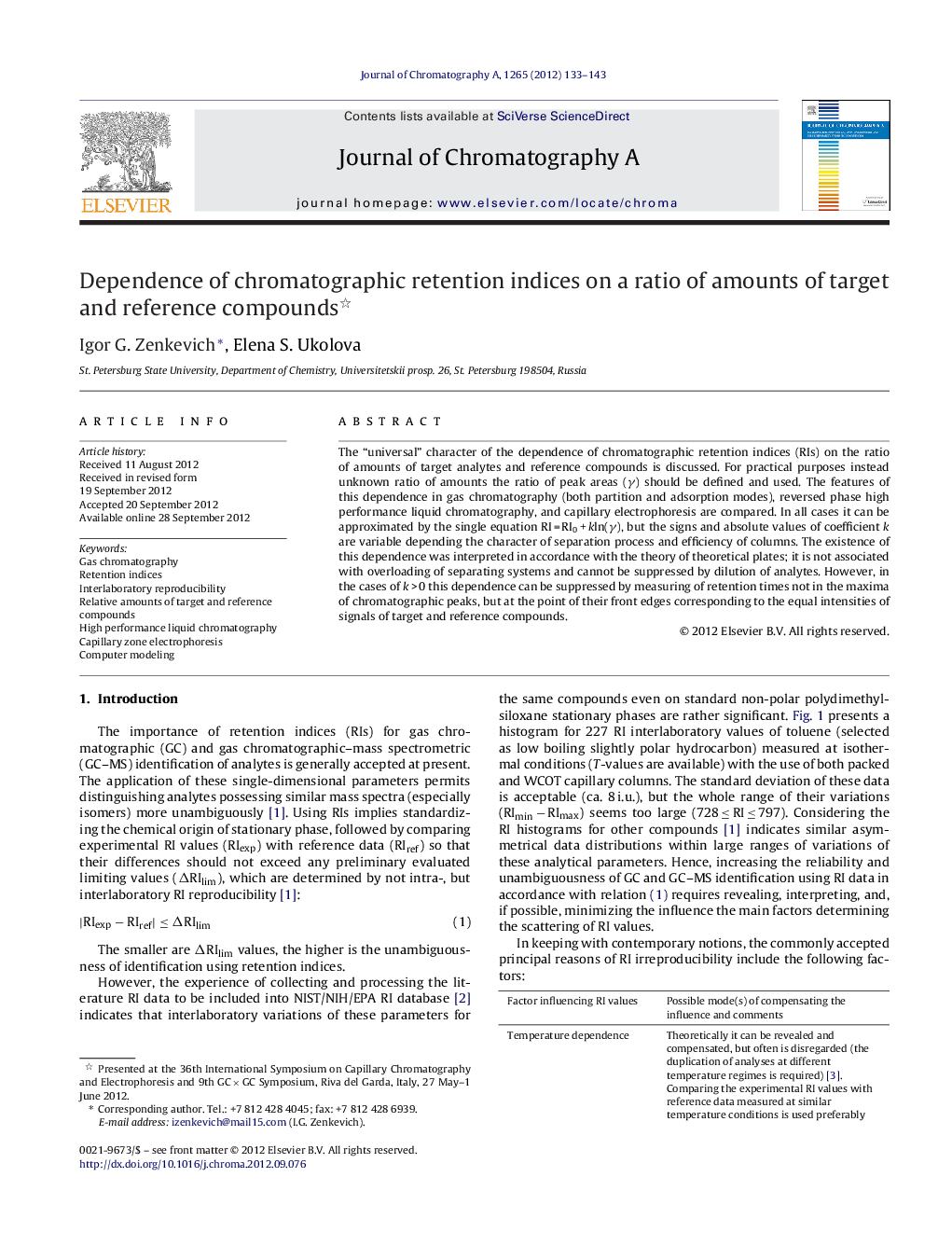| Article ID | Journal | Published Year | Pages | File Type |
|---|---|---|---|---|
| 1201865 | Journal of Chromatography A | 2012 | 11 Pages |
The “universal” character of the dependence of chromatographic retention indices (RIs) on the ratio of amounts of target analytes and reference compounds is discussed. For practical purposes instead unknown ratio of amounts the ratio of peak areas (γ) should be defined and used. The features of this dependence in gas chromatography (both partition and adsorption modes), reversed phase high performance liquid chromatography, and capillary electrophoresis are compared. In all cases it can be approximated by the single equation RI = RI0 + kln(γ), but the signs and absolute values of coefficient k are variable depending the character of separation process and efficiency of columns. The existence of this dependence was interpreted in accordance with the theory of theoretical plates; it is not associated with overloading of separating systems and cannot be suppressed by dilution of analytes. However, in the cases of k > 0 this dependence can be suppressed by measuring of retention times not in the maxima of chromatographic peaks, but at the point of their front edges corresponding to the equal intensities of signals of target and reference compounds.
► Retention indices (RIs) depend on a ratio of amounts of target and reference compounds. ► This ratio is one of the main factors influencing interlaboratory RI reproducibility. ► The ratio of peak areas can be used instead unknown ratio of their amounts. ► The measuring of retention times at front edges of chromatographic peaks is proposed.
